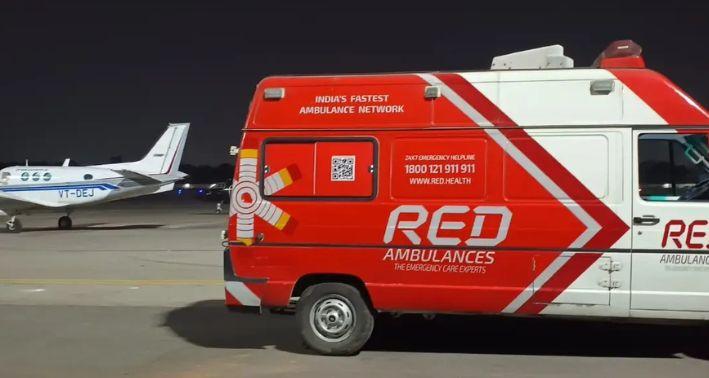The Critical Role of ICU, Ventilator, and Oxygen Ambulance Services in Modern Emergency Care

When a medical emergency strikes, time and equipment can mean the difference between life and death. That's where specialized ambulance services like ICU ambulance service, ventilator ambulance service, and oxygen ambulance service come into play. These aren't your regular transport vehicles—they're mobile intensive care units designed to provide continuous and advanced medical support while on the move. As healthcare systems become more patient-centric and technology-driven, the need for such advanced ambulance services has grown significantly, especially in densely populated and rural areas.
Understanding the Types of Ambulance Services
Ambulance services can be broadly categorized into Basic Life Support (BLS) and Advanced Life Support (ALS). BLS ambulances cater to patients who do not require invasive medical intervention en route. However, for critically ill patients needing constant monitoring and life-sustaining treatment during transit, ALS ambulances like ICU, ventilator, and oxygen-equipped ambulances are essential.
Let’s delve deeper into these specialized ambulance types.
ICU Ambulance Service: Mobile Intensive Care Units
An ICU ambulance is essentially a mobile intensive care unit designed for transporting critically ill or injured patients who require constant medical attention. These ambulances are equipped with advanced monitoring systems, ventilators, defibrillators, infusion pumps, ECG machines, and trained critical care paramedics or doctors.
Key Features:
-
Real-time patient monitoring (heart rate, oxygen saturation, blood pressure, etc.)
-
Medication administration systems
-
Advanced airway management tools
-
Onboard critical care specialists
Use Cases:
-
Inter-hospital transfers for ICU patients
-
Emergency cases like stroke, cardiac arrest, or severe trauma
-
Transporting patients requiring long-distance critical care
ICU ambulance services are indispensable in cases where stability during transit is non-negotiable. Their presence is especially vital during transfers from under-equipped hospitals to tertiary care centers.
Ventilator Ambulance Service: Life Support in Transit
The ventilator ambulance service is tailored for patients who cannot breathe independently and require mechanical ventilation. It is often a component of an ICU ambulance but can also be arranged as a standalone service, depending on the patient’s condition.
Key Features:
-
Portable, high-performance ventilators
-
Skilled respiratory therapists or ICU-trained paramedics
-
Backup power supplies and oxygen cylinders
-
Suction machines and endotracheal intubation kits
Use Cases:
-
Patients with acute respiratory distress
-
Post-operative transfers involving general anesthesia
-
Transporting COVID-19 patients with severe lung damage
-
Newborns or neonates requiring assisted ventilation
With respiratory diseases and conditions on the rise, ventilator ambulances are increasingly becoming a necessity rather than a luxury, particularly in cities with congested traffic and long travel times to hospitals.
Oxygen Ambulance Service: Basic Yet Vital
While it may seem more basic compared to ICU or ventilator ambulances, the oxygen ambulance service serves a critical role in saving lives. These ambulances are equipped with oxygen cylinders and delivery systems suitable for patients experiencing hypoxia or other conditions requiring oxygen support.
Key Features:
-
Multiple oxygen delivery systems (nasal cannula, masks, etc.)
-
Pulse oximeters and basic monitoring equipment
-
Emergency medical technician (EMT) onboard
Use Cases:
-
Asthma attacks, COPD exacerbations
-
Heart attacks or chest pain
-
Patients with low oxygen saturation levels
-
Mild to moderate COVID-19 cases
Timely oxygen support during emergencies can significantly improve patient outcomes, especially for those suffering from cardiac or respiratory conditions.
How These Services Complement Each Other
In many critical cases, a multi-tiered response involving all three services is essential. For instance, a patient with a cardiac arrest may require:
-
Immediate oxygen support (Oxygen Ambulance),
-
Assisted ventilation (Ventilator Ambulance), and
-
Continuous cardiac monitoring with life-saving interventions (ICU Ambulance).
This integration ensures that every level of care is provided during transport, reducing risks and improving survival chances before reaching the hospital.
Why These Services Matter in Today’s Healthcare Landscape
-
Reduced Pre-Hospital Mortality:
Specialized ambulances offer life-saving interventions that were once only possible inside hospital ICUs. -
Increased Accessibility:
In many countries, tier-2 and tier-3 cities lack high-end emergency infrastructure. These mobile ICUs bridge the gap. -
Pandemic Preparedness:
During crises like the COVID-19 pandemic, ventilator and oxygen ambulances became critical for patient survival and controlling spread. -
Efficient Inter-Hospital Transfers:
Seamless and safe movement of patients between hospitals, even across state borders, is now possible with ICU-equipped vehicles.
Choosing the Right Service Provider
When selecting a provider for ICU, ventilator, or oxygen ambulance services, consider:
-
Medical equipment certifications
-
Qualifications of medical staff
-
Availability and response time
-
Cleanliness and maintenance of vehicles
-
Emergency backup systems
In India, companies like RED.Health and others have set a benchmark by offering 24/7 critical care transport with GPS-enabled tracking and telemedicine support.
Conclusion
The evolution of ambulance services from basic transport vehicles to high-tech mobile ICUs reflects the broader transformation in emergency healthcare delivery. Whether it's an ICU ambulance for complex patient care, a ventilator ambulance for respiratory support, or an oxygen ambulance for immediate relief, each plays a vital role in saving lives during the golden hour.
As the demand for better emergency medical services continues to rise, equipping ambulances with specialized life support systems is not just an option—it’s a necessity. Empowering these services with trained professionals and advanced medical technology ensures that critical care begins not at the hospital gate, but the moment help arrives.







